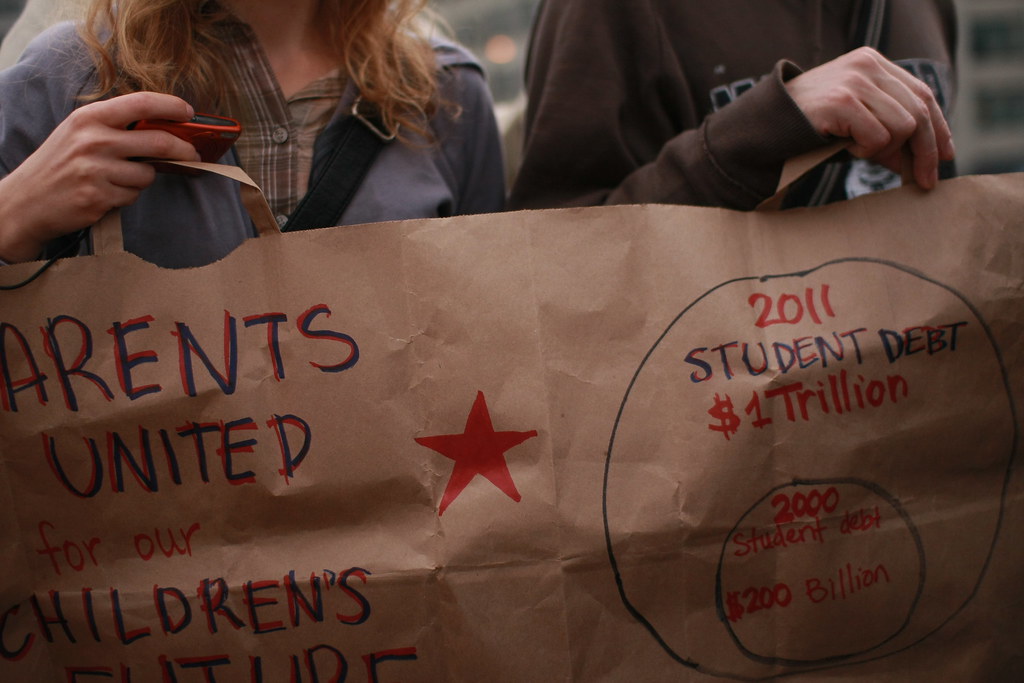
More than 44 million Americans hold a combined $1.7 trillion in federal student loan debt (and those numbers don’t include privatize student loans). And of that collective debt, women carry two-thirds of it, according to a recent study from the American Association of University Women (AAUW). The same report also showed women college graduates earn 74 percent of what men graduates earn.
With the cost of colleges and universities increasing by 103 percent since 1987, in contrast to the 14 percent increase in medium income, education remains out of reach for many students. And even for those who make it to and through college, the road to repaying debt is fraught with difficulties—especially since women take approximately two years longer to repay debt (in part due to these pay gaps).
The AAUW study also found that Black individuals are disproportionately affected by student loan debt: More than 70 percent of Black students go into debt, compared to 56 percent of white students. Furthermore, one-third of Black graduates borrow $40,000 or more, compared to 18 percent of all graduates.
As a result of COVID-19, the U.S. underwent the worst unemployment crisis since the Great Depression—accentuating the burden of student debt repayment. Women filed 59 percent of the unemployment claims made within the first few weeks of the pandemic. And this month, over 16 months into COVID, the road to populating women back into the U.S. workforce is a proving to be a long one.
It is (sigh) Jobs Day again.
— Chabeli Carrazana (@ChabeliH) September 3, 2021
Going to do unemployment rates first today because look at Black women.
🟣 Black women: 7.9% (⬆️ from 7.6%)
🟣 All women: 5% (⬇️ from 4.8%)
🟣 Latinas: 6% (⬇️ from 6.7%)
🟣 Asian women: 4.2% (⬇️ from 4.9%)
🟣 White women: 4.2% (⬇️ from 4.5%)
In response to the overwhelming amount of student loan debt in the U.S., President Joe Biden has begun a series of ‘targeted’ student loan forgiveness, resulting in approximately $9 billion of student debt being canceled.
More recently, Biden announced the government will automatically eliminate the federal student loan debt for those unable to maintain employment due to physical or psychological medical impairment. This accounts for 323,000 individuals—or $5.8 million in student loan debt.
Biden’s long-term plans for student loan forgiveness include targeted student loan cancellation, improving student loan servicing, holding student loan servicers and universities accountable, and improving policies around student loan debt collection. But activists want more: the cancelation of all student debt.
AAUW believes that individuals should urge the federal government to simplify repayment approaches, cancel student debt, eliminate and address the gender pay gap, expand Pell Grants, hold institutions accountable in addressing the financial needs of students, increase funding for public colleges and universities, among other suggestions.
Although politicians in Congress remain somewhat divided on what to do about student debt, Democrats largely support canceling some amount of student loan debt. Senator Elizabeth Warren (D-Mass.), Representative Ayanna Pressley (D-Mass.), Representative Joe Courtney (D-Conn.) and Majority Leader Chuck Schumer (D-N.Y.), on the other hand, have been calling on the Biden administration to completely eliminate all student loan debt.
“People [with student loan debt] live with a sword hanging over their heads,” Warren said. “And every day that goes by that sword draws a little closer. This is a matter of economic justice. It is a matter of racial justice. The president of the United States can remove this sword. The president can prevent this pain.”
Up next:





